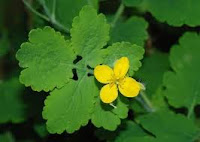As the name of this herb suggests, it grows wild only in Crete , and there it grows in gorges and mountainsides. It has a reputation as being an aphrodisiac and throughout the centuries young men have risked life and limb to collect this herb. Many have reportedly died in their attempts to collect the plant as it grows in inaccessible places. In Greek mythology it is said to have been given to the island of Crete Mount Dikti Crete . Hippocrates used it for stomach problems, prescribing a poultice of it to be put over the painful area.
Virgil wrote this of its healing powers in his Aeneid (book 12: lines 411-431): -
“A branch of healing dittany she brought,
 Which in the Cretan fields with care she sought:
Which in the Cretan fields with care she sought: Rough is the stem, which woolly leafs surround;
The leafs with flow'rs, the flow'rs with purple crown'd,
Well known to wounded goats; a sure relief
To draw the pointed steel, and ease the grief.
This Venus brings, in clouds involv'd, and brews
Th' extracted liquor with ambrosian dews,
And od'rous panacee. Unseen she stands,
Temp'ring the mixture with her heav'nly hands,
And pours it in a bowl, already crown'd
With juice of med'c'nal herbs prepar'd to bathe the wound.
 |
| Mt.Ida Crete |
The leech, unknowing of superior art
Which aids the cure, with this foments the part;
And in a moment ceas'd the raging smart.
Staunch'd is the blood, and in the bottom stands:
Which aids the cure, with this foments the part;
And in a moment ceas'd the raging smart.
Staunch'd is the blood, and in the bottom stands:
The steel, but scarcely touch'd with tender hands,
Moves up, and follows of its own accord,
And health and vigor are at once restor'd.”
The Roman author Cicero (106 BC - 43 BC) in his work De Natura (2.126) states:
"In Crete , the wild goats, when they are wounded with poisoned arrows, seek
for an herb called dittany, which, when they have tasted, the arrows (they say)
drop from their bodies."
While Pliny the Elder (c.23-79 AD), the naturalist in his Natural History wrote that stags, like the Cretan mountain goats chewed on dittany to remove arrows and sure their wounds.
In Greek mythology Artemis, the huntress hunted with poisoned arrows, and the Cretan mountain goats (according to Aristotle) would seek out dittany, chew it and place it on their wounds. The poisoned arrow would fall to the ground and the wounds would heal.
Previously this herb had the botanical name Amaracus dictamnus Benth and Amaracus tomentosus Moerch.
It grows to a height of 0.3 metres, and has pink to purple flowers in summer and velvety grey –green leaves, a little like those of sage. It is a relative of oregano and marjoram as its botanical name suggests. It is a member of the Lamiaceae family of plants which include mint, thyme, basil, rosemary, lemon balm and lavender among many others. Its essential oil consists mainly of carvacrol and thymol along with p-cymene and γ-terpinene. Carvacrol is known to have antibacterial properties, and smells of oregano. Thymol is a fungicide and has antimicrobial and antioxidant properties.
A tisane can be made from the flowers and leaves and this is said to relieve period pains, headaches and neuralgia. It is also thought to relieve the pains of childbirth and is said to have been used for this reason by Aphrodite when she was in labour on Mount Ida on Crete . No doubt it is still used on Crete as an aphrodisiac, and today it can be cultivated in gardens and pots.
































